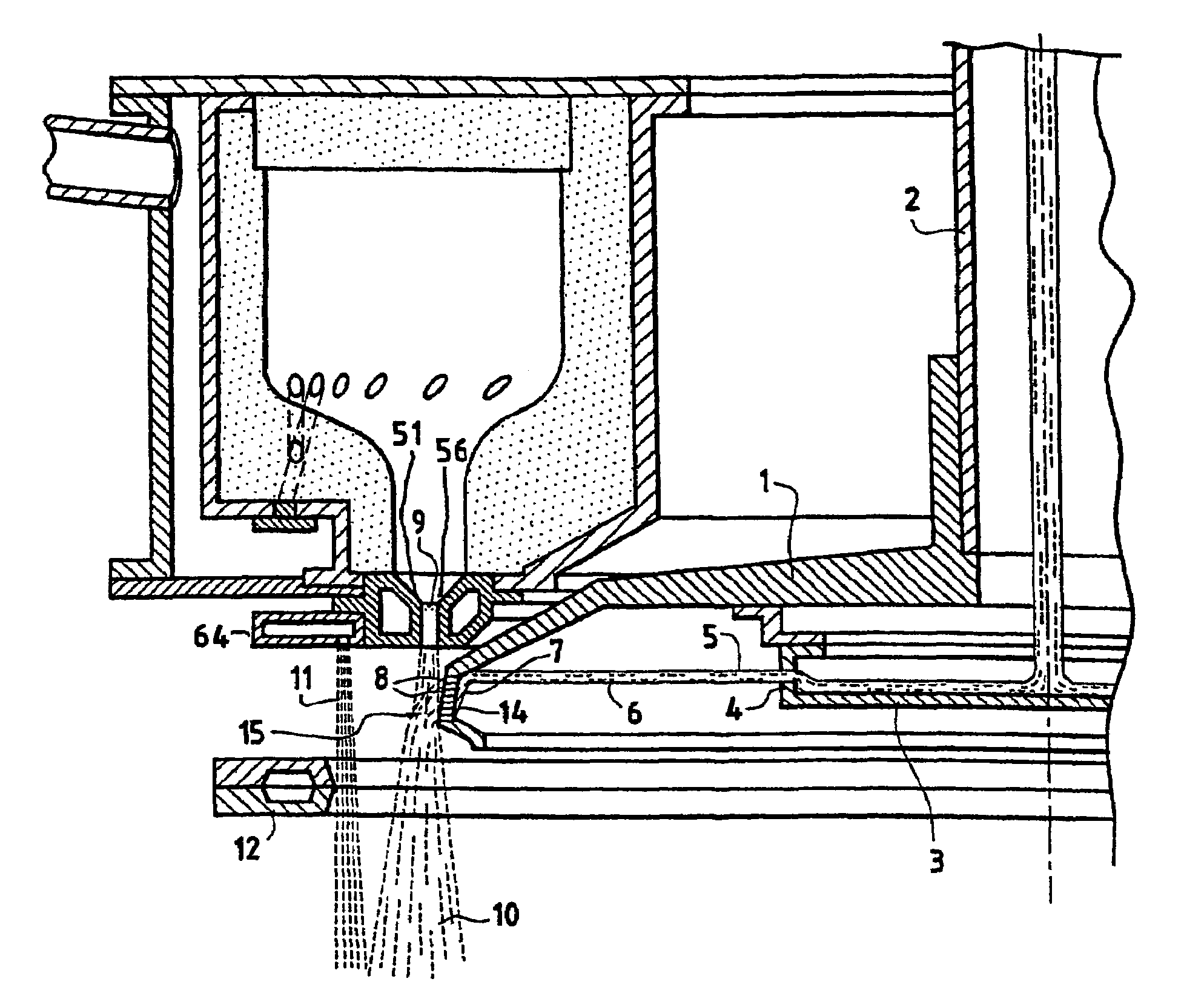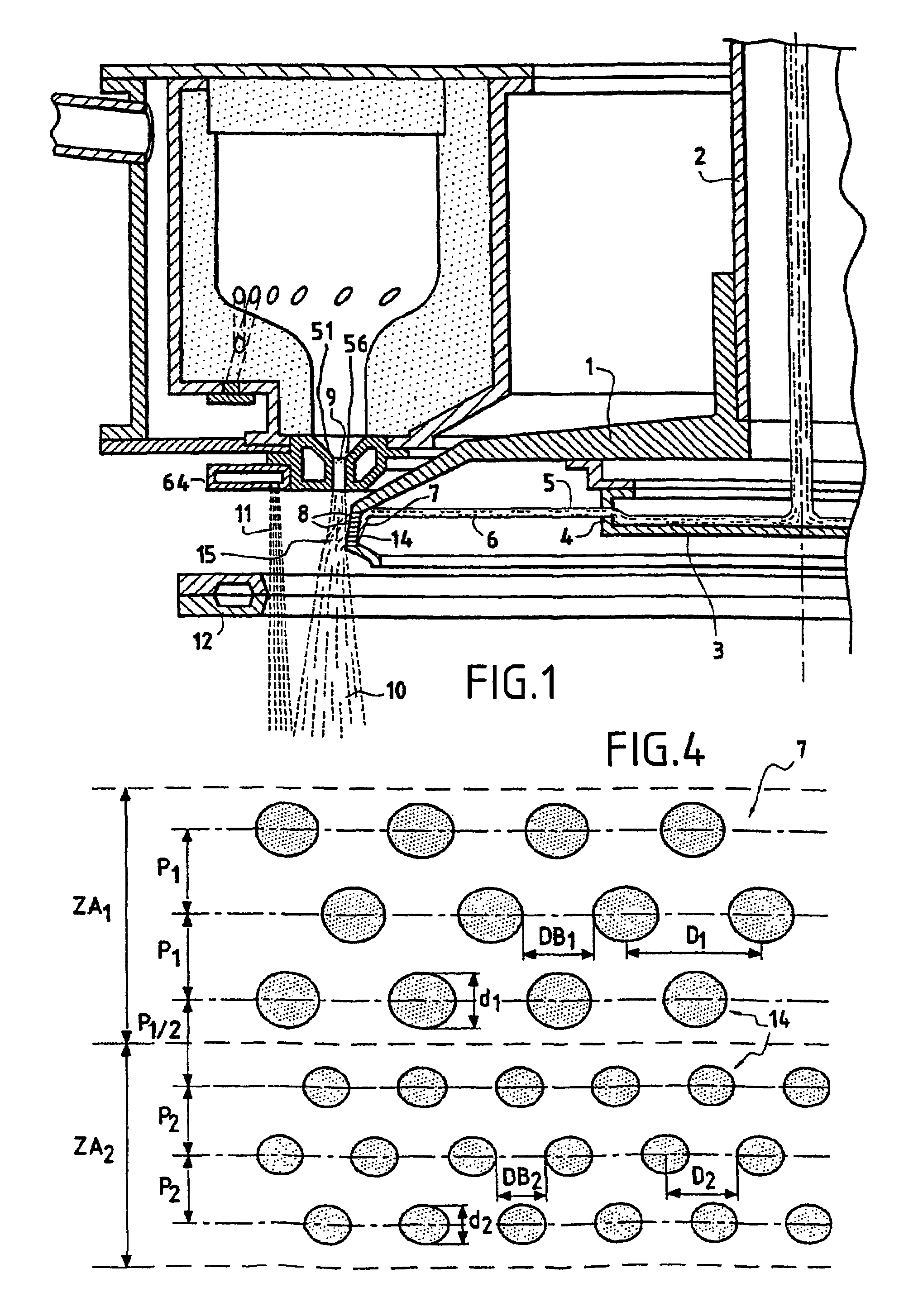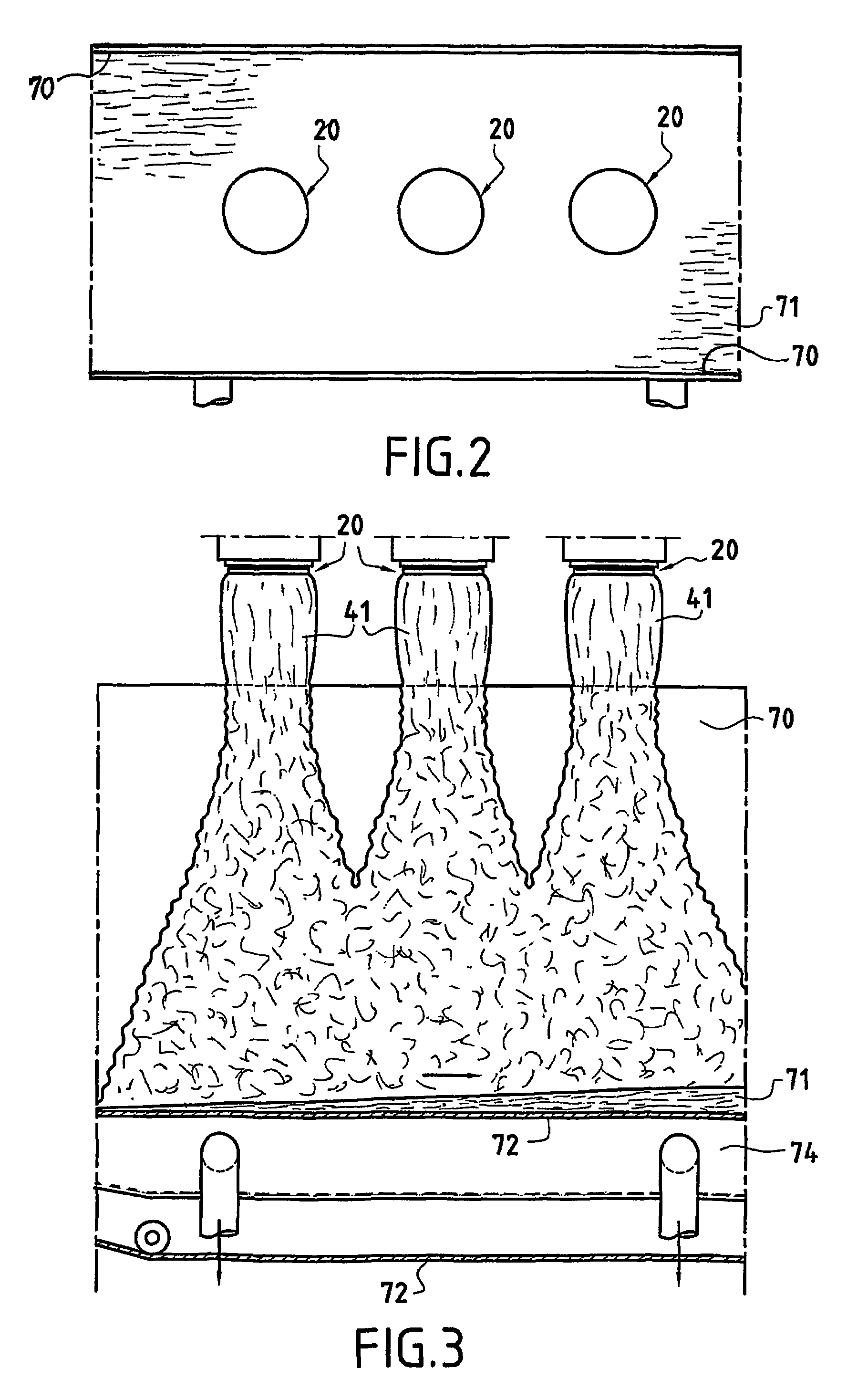Process and device for formation of mineral wool and mineral wool products
a technology of mineral wool and processing device, which is applied in the direction of glass making apparatus, applications, non-woven fabrics, etc., can solve the problems of short life of current spinner design, extremely high cost of spinner replacement, and complex glass fiberization, and achieve high compression storage and high thickness recovery measurement
- Summary
- Abstract
- Description
- Claims
- Application Information
AI Technical Summary
Benefits of technology
Problems solved by technology
Method used
Image
Examples
Embodiment Construction
[0062]For the purposes of this specification, use of the term “glass” is intended to include any of the glass mineral materials, such as rock, slag and basalt, as well as traditional glasses such as, for example, E-glass, S-glass, C-glass, E-CR-glass, A-glass, A.R. glass (alkali-resistant, L-glass (lead), D-glass (dielectric), M-glass (high-modulus), with commercial C-glass being the most preferred. While glass material is preferred, this invention has useful application to “thermoplastic materials” which, in addition to glass and other mineral fibers, include polymeric materials, such as polyester, polyethylene and polypropylene fibers. It is expected that both polymer and glass fibers could be used simultaneously in the insulation products of this invention. And finally, although uniform straight fibers can be used herein, this invention also contemplates the use of “irregular fibers”, such as, hollow, kinked, and curly fibers, and fibers having irregular or different cross-sectio...
PUM
| Property | Measurement | Unit |
|---|---|---|
| Length | aaaaa | aaaaa |
| Fraction | aaaaa | aaaaa |
| Fraction | aaaaa | aaaaa |
Abstract
Description
Claims
Application Information
 Login to View More
Login to View More - R&D
- Intellectual Property
- Life Sciences
- Materials
- Tech Scout
- Unparalleled Data Quality
- Higher Quality Content
- 60% Fewer Hallucinations
Browse by: Latest US Patents, China's latest patents, Technical Efficacy Thesaurus, Application Domain, Technology Topic, Popular Technical Reports.
© 2025 PatSnap. All rights reserved.Legal|Privacy policy|Modern Slavery Act Transparency Statement|Sitemap|About US| Contact US: help@patsnap.com



